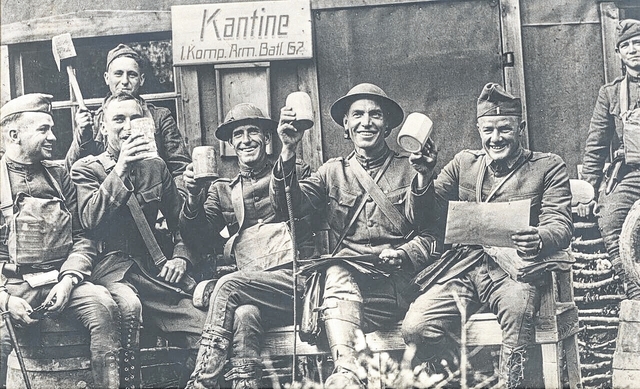The South Carolina State Museum has recently launched a new exhibit that shows how World War I impacted the state and the people who lived there.
JoAnn Zeise, history curator at the State Museum, summed up the new exhibit saying, “This exhibit is not so much just the military experience, but also the impact the war had on our country and state. You can make the argument that World War I was the pivotal event of the 20th century, taking us from the 19th century, setting up World War II and the Cold War, and shaping the map in ways still relevant today.”
Visitors will have a chance to go back in time to the start of the last century when South Carolina was still struggling to overcome the effects of the Civil War. Other Southern states had recovered as the “New South” arose, but South Carolina had not recovered at the same rate as her neighbors. South Carolina supported the war, and the people of the state were fiercely patriotic with around 3,000 men enlisting.
The Americans entered the war very poorly equipped. Having to find weapons in a hurry for training, they bought 20,000 Mark II Ross Rifles, a notoriously unreliable piece, sold to the Americans by Canada. As the American soldiers arrived in France, they had to use the French M2 gas mask (a glorified surgical mask) that provided little protection against the poison gas used by the Germans. It wasn’t until 1918 that they received American made gas masks based upon the far superior British design.
One display shows the dress and kit for an American ‘doughboy’ in WWI. The term doughboy was a colloquial term for any American infantryman, though there is no definite understanding of where the term originated. The term was first used during the Mexican War of 1946-48, and one theory put forward was that the troops were always covered in a fine, white dust from marching over the ground in Mexico, making them resemble lumps of unbaked dough.
Also, there are photographs included and anecdotes from soldiers on the front lines, such as one letter written home by Charles Donnelly after his first week in France, “Soon got acquainted with a local drink called vermouth et cassis which was rather sweet and gave no hint that it was alcoholic until a few had been downed; then it has a sneaky way of letting you know that you should have stopped before you took the last one or two.”
Not much of the time spent in the trenches was filled with humor. Life in the trenches was a horrendous time alternating extreme boredom with unrelenting terror all underpinned with poor conditions, dampness, foul odors and poor food. One of the ways in which the average soldier managed to pass the time was to engrave shells and other metal objects with designs. These craft items are known today as trench art, and the Museum is proud to have some displayed alongside the weapons used during the war, in the life-size recreation of a trench, through which visitors can walk, The Easley Progress reported.
Of course, no exhibit of this nature would be complete without a mention of those South Carolinians who were decorated for bravery. Of the eight men awarded the Medal of Honour, one stands out. That being the one awarded to Lt. James Dozier, who despite being wounded led his men to safety after destroying a German machine-gun unit, and taking several Germans prisoner.
The display does not only cover the military but also reflects on those that were left at home and their contribution to the war effort, such as voluntarily accepting rationing of certain goods, increased manufacturing for the war and planting war gardens.
A special display is dedicated to the nurses at Camp Jackson and the Charleston Naval Base who heroically fought the Great Flu Pandemic of 1918. This deadly virus resulted in hundreds of deaths, and these brave ladies stood at the forefront of South Carolina’s bid to fight this deadly epidemic.
South Carolina and the Great War is free with general admission. The State Museum can be found at 301 Gervais St, Columbia, South Carolina. The opening hours are Monday, Wednesday, Thursday, and Friday 10:00am to 5:00pm; Tuesday 10:00am to 8:00pm; Saturday 10:00am to 6:00pm and Sunday 12:00pm to 5:00pm.
